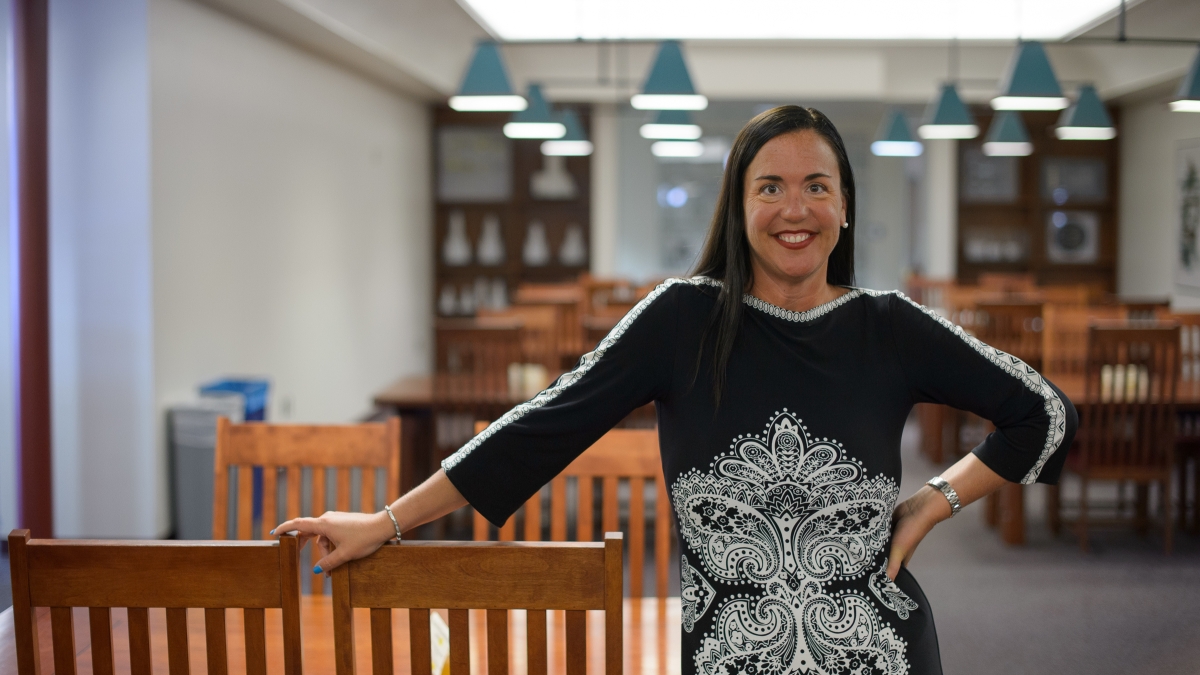'Inside the Academy' gleans lessons from America's top education scholars

Inspired by the Emmy Award-winning Bravo cable television hit "Inside the Actors Studio," five years ago, Arizona State University’s Audrey Amrein-Beardsley created an interview series honoring America’s “best of the best” education scholars. Not only does her inventive "Inside the Academy" showcase the passion of these top research educators, but it offers viewers important context for understanding education policy trends.
“We wanted to honor the ‘academy award winners’ in the field of education, those who have contributed most substantially to our current theories about education, educational reform, philosophy, psychology and all disciplines related to education,” said Amrein-Beardsley, associate professor in ASU’s Mary Lou Fulton Teachers College.
She said "Inside the Academy" is an online and free open-source historiographical and archival website that highlights the personal and professional stories of widely respected education experts. To date, 19 educators have been featured, most of them members of the National Academy of Education. In the future, Amrein-Beardsley added that she hopes to expand the series from its K-12 education focus to include higher education and international education scholars.
Two of the highly respected educators appearing on "Inside the Academy," Linda Darling-Hammond and Diane Ravitch, are also slated to be keynote speakers at local events co-hosted by Teachers College and the Arizona School Boards Association later this year. Ravitch, a New York University education professor, is a champion of public education and a prolific writer. She most closely answers the looming question among education scholars about how to translate their research into practice, Amrein-Beardsley observed.
“Diane Ravitch is most well-known for helping to construct the No Child Left Behind act of 2002,” she said. “But after she saw the unintended consequences of it, she flipped and decided the policy that she helped develop was not in the best interests of students in America’s public schools.
“Diane also is an active blogger who probably takes the most innovative approach in terms of how she relates research to what’s happening in the everyday lives of teachers, administrators, students and parents.”
Amrein-Beardsley described Linda Darling-Hammond, a Stanford University education professor, as working intensely with policy makers at local, state and federal levels of government, and making an important difference in those arenas.
“More than anyone, she probably has her finger most accurately placed on the pulse of the American education system,” Amrein-Beardsley said. “She is hugely prolific and highly influential, and was almost appointed U.S. Secretary of Education by President Obama.”
Perhaps most enjoyable for Amrein-Beardsley was interviewing two of her Teachers College mentors, David Berliner and Gene Glass – both Regents’ Professors Emeritus at Arizona State University. At first rivals, the two widely recognized education icons over the years have become close: “Even though at times they still disagree, they write together and are lifelong friends.”
Amrein-Beardsley said interviewing “pure genius” Michael Scriven, a psychology professor at Claremont Graduate University, has been her most unexpected experience. Familiar with his research in program evaluation, one of her areas of expertise, Amrein-Beardsley said she had been more intimidated to meet him than any of the other "Inside the Academy" guests.
“But he was so down-to-earth and inspiring with his intellect; he ended up being one of my best interviews,” she said.
Sadly, two of the "Inside the Academy" luminaries passed away during 2014 – Stanford University’s Elliott Eisner, a leading scholar of arts education, and Columbia University’s Maxine Greene, a self-proclaimed existentialist who advocated experiential learning. Not only does Amrein-Beardsley feel fortunate to have met them and archived their stories, but she said needing to interview Greene in her New York apartment convinced her that talking with scholars in their homes lent a more personal touch to all "Inside the Academy" profiles thereafter.
So what is the common thread running through this gallery of education scholars? Amrein-Beardsley said based on her interviews, there are three. First, nearly all of them were inspired by the work of John Dewey, the 20th-century education reformer who advocated for meaningful activity in learning and participation in classroom democracy. Second, Amrein-Beardsley said all of the thought leaders had been inspired to invoke change in America’s public education system whether they were self-described as good or bad students – and they were evenly split on that, she noted.
Finally, to a scholar, all of them said they were seriously worried about the future of America’s education system, Amrein-Beardsley recalled.
“Across the board, they all have in common grave concerns about major education policies being advanced that include increased standards with high-stakes tests attached to them – because these are not research-based,” she said. “The honorees, for the most part, have at least three decades of doing scholarly work. So they have seen how history repeats itself, especially in terms of policy. So some might say they have high predictive accuracy about what is coming down the pike.”
In May, Amrein-Beardsley had research gleaned from in-depth qualitative analyses of "Inside the Academy" interview data published in Columbia University’s Teachers College Record. She co-authored “Bridging Research, Policy, and Practice: Voices from Inside the Academy” with ASU’s Teachers College doctoral candidates Noelle Paufler and Jessica Holloway-Libell. Also at ASU, a new course in educational foundations based on this "Inside the Academy" research and these honorees will be offered in spring 2015 through ASU Online.